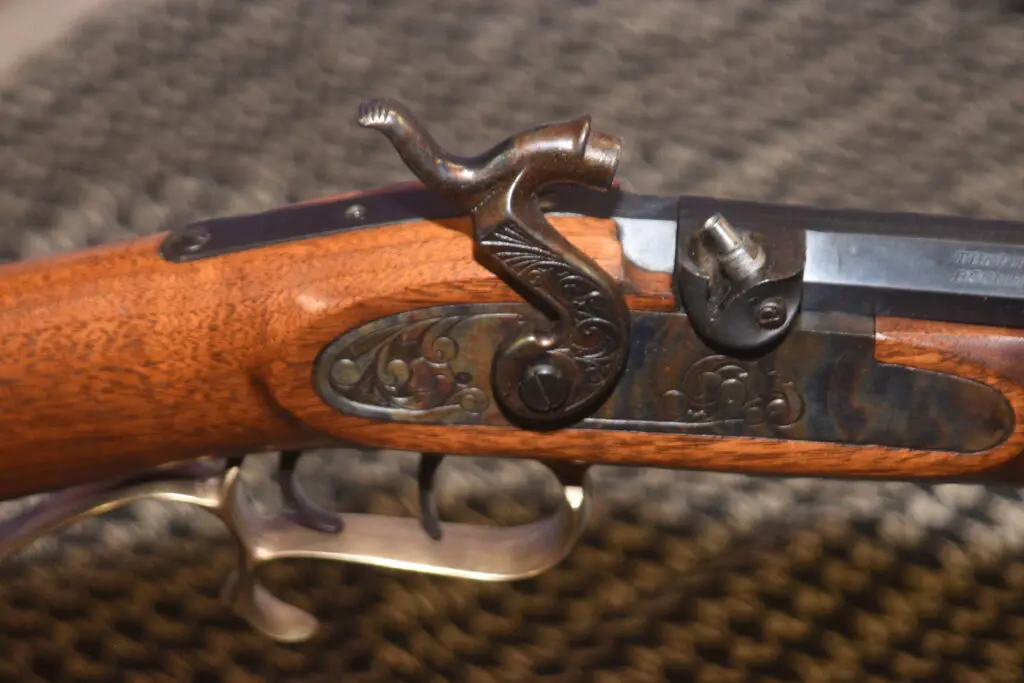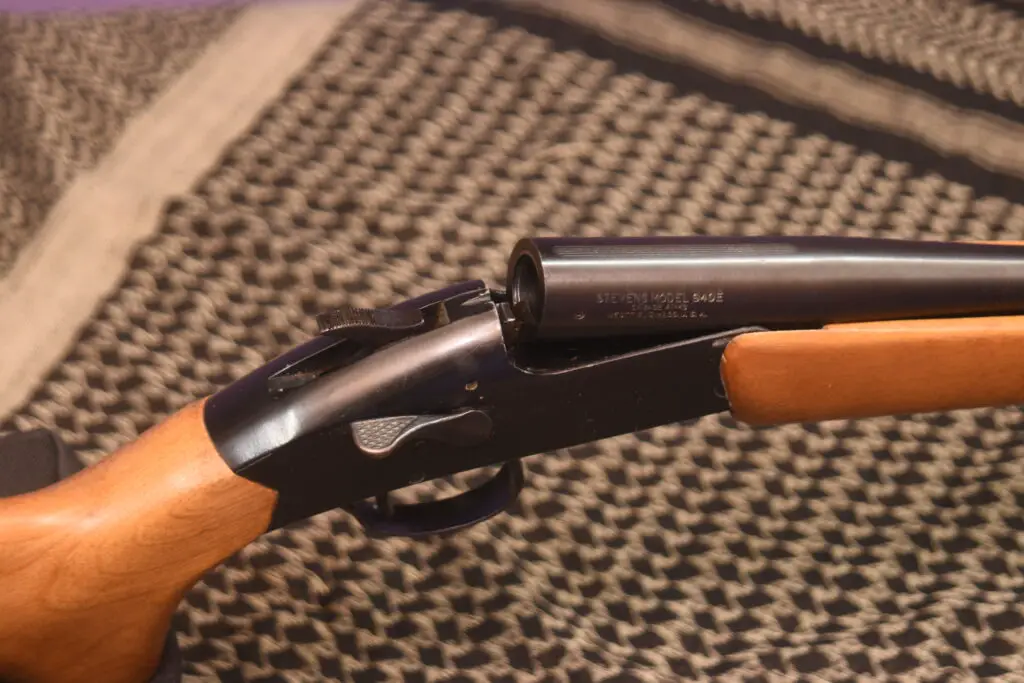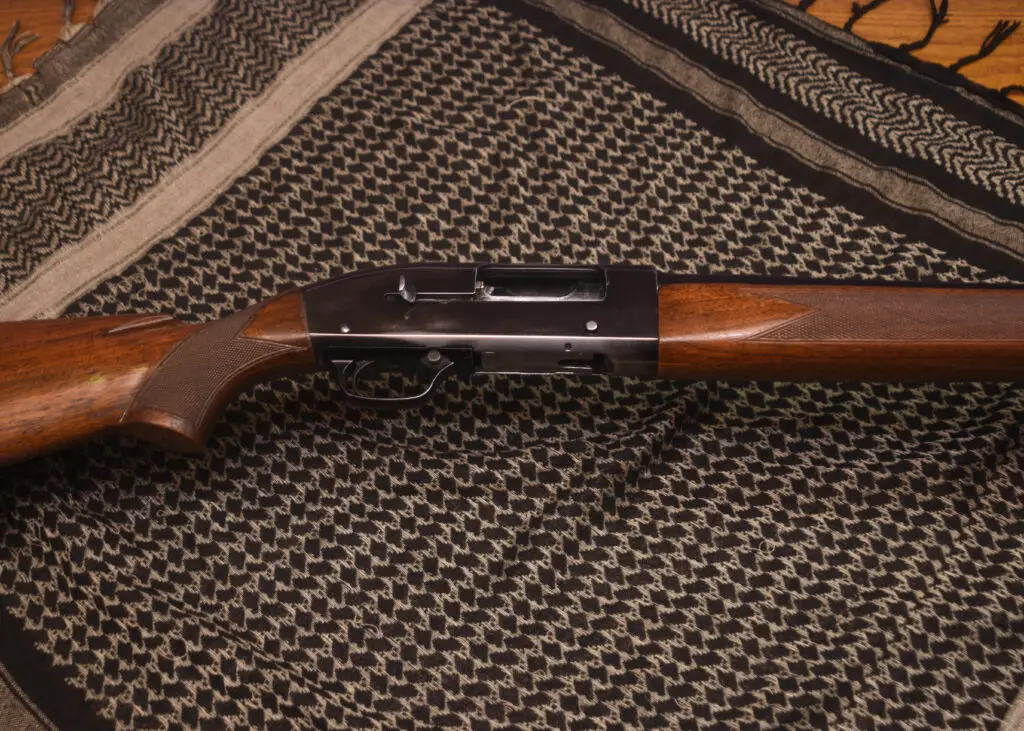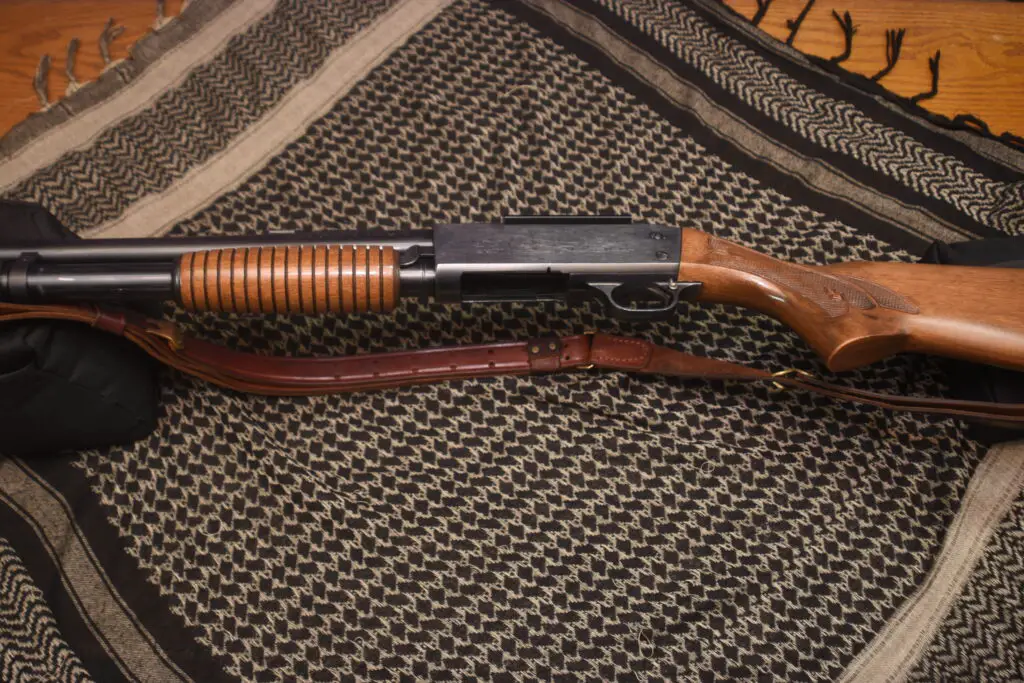From Doc Holliday’s “Street Howitzer” to Mad Max’s sawed-off VG Bentley, the short-barreled shotgun (SBS) has an allure not found in other firearms. Be it the perceived element of illegality or the defensive benefits, the SBS holds a special place in firearms lore. But why are they illegal?
Technically, they aren’t illegal, just highly regulated. The ATF regulates long arms and has defined minimal barrel and overall lengths before an NFA tax stamp is required, included in this series of definitions is the SBS.
In order to legally own a sawed-off shotgun, you will have to abide by both federal (ATF) rulings as well as local ordinances. Let’s look at the ins and outs of owning your own “Street Howitzer.”
Firearm Definitions
Let’s start with the definition of a shotgun, then extend this to an SBS. Also, from here on out, I’ll use the name Short-Barreled Shotgun, or SBS, to keep things simple. The ATF uses the following definitions (https://www.atf.gov/firearms/qa/shotgun-firearm-subject-nfa)
“The NFA defines shotgun, in part, as a weapon designed or redesigned, made or remade, and intended to be fired from the shoulder and designed or redesigned and made or remade to use the energy of the explosive in a fixed shotgun shell to fire through a smooth bore either a number of projectiles (ball shot) or a single projectile for each pull of the trigger.
A shotgun is a firearm subject to the NFA if the shotgun has a barrel or barrels of less than 18 inches in length. A weapon made from a shotgun is also a firearm subject to the NFA if the weapon as modified has an overall length of less than 26 inches or a barrel or barrels of less than 18 inches in length.
[26 U.S.C. §§ 5845(a)(1)-(2), (d)]”
So, in short, a smooth barrel, shoulder mounted firearm is a shotgun. I’ll dispense with the nuances that make a shotgun different from a black powder firearm. If you shorten the overall length or the is barrel shorter than the ATF’s limit, then you have legally created an SBS.
Shotguns vs Rifles
A shotgun differs from a rifle in two primary characteristics. First, it has a smooth bore, whereas a rifle has a rifled bore that imparts a spin on the bullet. Second, a rifle fires a single projectile, where a shotgun fires several projectiles (ball shot).
The other little nuance is that the firearm was “made as a shotgun.” We will get to this when we talk about a few short non-shotguns, such as the shockwave. But for now, the shouldered, smooth bore, designed to shoot one or more projectiles definition, will suffice.
History Of The Modern Shotgun
Single and double barrel smooth bore shotguns were born out of the, then, modern flintlock. The speed of ignition of the flintlock (over the earlier matchlock ignition systems) gave rise to bird hunting and sport shooting.

Technology advanced from flintlock to percussion caps, and finally to complete cartridges (primer, powder, wadding and shot). Along the way, Joseph Manton developed the breach loading double-barrel shotgun. This became the standard for a generation. The modern pump action was born out of the Winchester Model 1912 and perfected in the concept of the Winchester Model 1897, The internalized hammer of the Model 1897 lead to great popularity. Ultimately the 1897 was produced through the 1960s. The first successful semi-automatic shotgun was the Browning Automatic 5, designed by the brilliant John Browning in 1898 and mass produced by 1905. The Auto-5 was also produced under licensed variants, such as the Remington Model 11 and Savage Model 720. While the core concepts of the breach loader, pump, and semi-automatic have been fine-tuned, they remain the most popular shotgun actions today.
Shotgun Actions
So what does some advancement by a British gunsmith in 1790 have to do with my street-sweeper? Glad you asked. In short, it’s all about the action.
Breach Load
A breach loaded single barrel, double barrel, or over under is a simple device with only a few moving parts. It “breaks” in half, allowing the shooter to place the shell(s) directly into the barrel. Snap it shut, and the primer is now accessible to the hammer. Pull the trigger and it goes boom.

Pump and Semi-Automatic
A pump action does not expose the innards to the shooter, however, it requires manual intervention to actuate the pump, thus ejecting the spent round and chambering a new round. Many pump actions have a tubular magazine that holds the next round so manual loading is reserved for when the tube is empty.
Finally, we have semi-automatic actions. Here, the gun does everything once the shooter presses the trigger. The action utilizes gas, recoil, or both to eject the spent round, and springs to load the new one. Again, there usually is a tubular magazine holding the next round in place.

Action and Consequences
The action defines how short the resulting SBS can be. In the case of a pump and semi-auto the mechanics of the action determine the final length. A pump is limited to the length of the action. The mechanics of the pump require a specific action bar (the part that connects the moveable fore end to the bolt). Cut a pump barrel too short and you risk shooting into the tube magazine, the fore end, or worse, your hand.
Semi-automatic actions also have similar length limits. The action requires the proper amount of recoil and gas to work without jamming. While these may be overcome with spring selection, removing length off the barrel can cause issues.
Secondly, both pumps and semis use a tube as a magazine. By trimming the barrel, you will ultimately get to a point where the tube must also be shortened. Single barrels and double barrel shotguns, on the other hand, bring out the hacksaw and go at it (not literally). The action does not rely on the length of the barrel therefore you can trim to any length. The only determining factor is your tolerance of recoil and how much you dislike your wrists.

SBS Definition
Now that we know what to cut, we need to decide if trimming will require a little extra paperwork to remain legal.
The Bureau of Alcohol, Tobacco, Firearms, and Explosives (BAFTE, but everyone calls them the ATF), is the agency with purview over interpretation and enforcement of the National Firearms Act (NFA). The NFA, among other things, defines certain firearms that are subject to federal taxation and registration. SBS is within this influence, as is short-barreled rifles, sound suppressors, the catch-all group of “Any Other Weapon” (AOW), and Destructive Device(s) (DD). But those are a topic for another day.
First, to be defined as an SBS, the firearm must originate as a shotgun. That means shoulder fired, smoothbore, with the intent of shooting one or more than one projectile. If the firearm was not originally design as a shotgun (e.g., pistol) then the following rules do not apply (it’ll land in the category of an AOW–again a story for another day).
Second, we look at barrel and overall length. A barrel shorter than 18 inches then you have an SBS. Finally, consider the overall length. Shorter than 26 inches and again you have an SBS.
For an example of this, consider the original Terminator movie. When Kyle cuts off the stock of the Ithaca Model 37, he most likely created an SBS. With an 18-inch barrel, you only have 8 inches left over for the receiver and the stock.
Advantages of an SBS
So, we now have the legal definition of an SBS, but why would you want one? Several good reasons, actually.
Moving Around
First and foremost is maneuverability. Even a few inches can make a difference navigating close quarters. A full-length shotgun (hunting not designed for defense) can easily exceed 40 inches in total length. Tactical ones aren’t much shorter than that with average lengths of 36”. If your tactical training involves vehicle maneuvers, then the shorter the better. Aside from the fact that Hollywood has guns all wrong, we inevitably pick up bad habits from what we see. This especially includes house and room clearing. Done properly, you aren’t crowding corners and doors. Therefore, barrel length shouldn’t matter. However, if you are working with a partner/team or you need to work through a doorway, then a long barrel is a liability. Where legal, keep it short and this difficult job becomes a little safer and easier.
SBS Patterning
Keeping on the topic of CQB, we need to discuss pellet spread. Shotguns, also known as scatter guns, are used for birds and small game as their pellet load spreads over distance. Any good hunter will “pattern” their gun and load to know the effective range. The shorter the barrel, the quicker and wider the pellets spread. At close distances, you will still see the devastating effect of a tunneling wound. However, at the shorter distances inside a house, an SBS has a greater likelihood of pellet spread. This results in a greater probability of disrupting multiple organs.
SBS Penetration
Finally, we need to consider the risk of over penetration. A shotgun, compared to many other firearms, is less likely to over penetrate. The powder charge imparts each projectile with a fraction of the total energy. While devastating at contact/short distances, pellets quickly dissipate their energy. The lethal range of a shotgun is measured in yards rather than hundreds of yards of a rifle.
Shot indoors (where most defensive use of a shotgun will occur), the energy of the cartridge spread over the 9 pellets of 00 buck has less potential to breach sheetrock or solid doors. Add to that the loss of energy with a shorter barrel and you have a firearm that is less likely to over penetrate into a neighboring room or building.
Disadvantages of an SBS
Despite the advantages, not everything about owning an SBS is easy. While it’s nice to have a more manageable firearm with a bullet pattern that is more suited to a close quarter environment, it’s not all roses.
Even More Paperwork
SBSs are subject to the controls of the NFA. That means you need to apply for permission to own one. I’ll get into that process in the next section, but for now, it involves a fair amount of paperwork, $200, and a long wait. The penalties for possessing (or possessing the components to make one) can be severe. Getting into NFA-controlled firearms is a step beyond heading to your nearest FFL and coming home with a new safe queen. Once you have your tax stamp, you need to keep of the tax stamp with your SBS at all times (although I recommend a color copy). Have a copy in your safe, ammo case, range bag, and shotgun sleeve. To be safe, keep a copy everywhere.
No More Range Sharing
Even common use can be a concern under the NFA. Technically, you can’t let another person shoot your SBS, even in your presence. Letting a friend borrow it is right out. So, an SBS is yours and not to be shared, which kinda takes away the fun of owning a new gun.
One of the first restrictions is that your location may not allow the ownership of NFA firearms, or specifically SBSs. While the usual suspects do not allow them (New Jersey, Illinois, and the District of Columbia) there are a few towns in safe states that choose to be more restrictive.
Before making your plans to purchase, check with your state and local authorities to make sure that it’s legal.
Location, Location, Location
Next, moving around with an SBS isn’t the same as a shotgun. While you can move around within your own state, crossing state lines requires an ATF Form 5320.20 (Form 20). Going to a match across state lines? Fill out a Form 20. Have a vacation home in another state and like to shoot there? Fill out a Form 20. There’s no cost associated with it and you usually get it back within a few weeks. You can also fill it out for a full year. I do that with all my NFA items and our off-grid camp every January to avoid the wait come spring.
SBS Recoil and Accuracy
Enough of the legal concerns, let’s look at the practical ones. A short shotgun comes with two physical challenges. First is recoil. Less barrel equals less mass equals more recoil. You can manage recoil with practice, but your shoulder and split times will take a beating.
Next is accuracy. Again, shorter barrel, shorter sight radius. This won’t be as big of a deal as going from a rifle to a pistol, but it is something you should be aware of.
Purchasing/Making an SBS
Ok, so I’ve been successful at convincing you of owning an SBS. How do you go about it? Glad you asked.
There are two options for adding an SBS to your collection, making one and purchasing one.
Making one falls under the purview of the ATF Form 1 process. To do this, you will procure either a complete shotgun (legal with an 18.5” or longer barrel), or “most” of the parts to make one. Then, fill out your Form 1. In this application, you will need the make and manufacture of the shotgun (or receiver if your building from parts), the final length, and your details (name, DOB) and trust paperwork (if filing as a legal trust). Send this paperwork off with a set of fingerprint cards, and a photo of to the ATF. Oh, don’t forget your $200 for the tax stamp. Within a few short (or long) months, you’ll have your stamp. Current wait times for electronic filing are about 30 days and 1 year for paper filing.
The next option is to purchase an existing SBS. Here, your SOT FFL (a special class of firearms dealer that can sell NFA items) will file a Form 4 to transfer the SBS to you. They manage the paperwork, send in your prints and photo, and hold on to the SBS during the wait time. They will also collect a $200 check for the tax stamp. A good SOT will allow you a “conjugal visit” with your SBS during the wait time. Current wait times for an electronic filing is 9 months and paper filing is 14+ months.
Regardless of your purchase path, there’s many investments. From parts to tax stamps to time. The NFA journey is fun, but it takes dedication, perseverance, and attention to the rules.
SBS Alternatives
So you recognize the advantages of a SBS but are not ready to get into all the NFA paperwork, requirements, and cost. Good news! There are a few alternatives. They aren’t exact copies, but like a pistol braced AR Pistol they achieve a similar goal.
First is the Shockwave. Not quite a pistol, and can’t be shouldered, the Mossberg 590 Shockwave lies somewhere in the middle. The Shockwave has a “Raptor” grip that lies halfway between a sawed of stock and a pistol grip. The raptor allows the Shockwave to avoid the definition of a shotgun. It’s also longer than 26” therefore it avoids being classified as an AOW.
As you can assume, with just one look at it, it’s not that comfortable to shoot and even more unstable to aim. Unless you’re willing to put in the wrist-abusing range time, the Shockwave will be little more than a novelty.
On the heels of the Shockwave is the Remington Tac-14. With the same form, fit, and wrist-punishing function the Remington adds competition to the market.
Drifting even farther from the SBS form is the shotgun caliber pistol. Not going to recommend one for self-defense but they can fit a niche for snakes or other homesteading pests.
One of the more popular is the Taurus Judge. This 5 shot .410 caliber pistol is perfect for when you need a maneuverable platform and want a large spread of pellets. There are other options such as the Smith and Wesson Governor and the Bond Arms Snake Slayer.
These will never be a substitute for an SBS but they have their place. Even as a (very) close contact defensive weapon, or just around the homestead for the occasional pest. They have a niche.
Summary
So why is a sawed-off shot gun illegal? Officially the ATF considers any long arm necessary for registration if it is “too short.” With that approach they have made shotguns with a barrel less than 18 inches or a total length less than 26 inches illegal unless properly registered and taxes paid.
Once you go through the required paperwork an SBSs become valuable for its maneuverability, CQB worthy patterning, and suitability for indoor use. After reading this article, hit your favorite websites and forums and decide if an SBS is for you.

